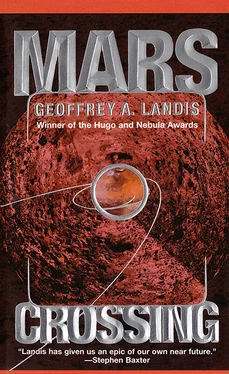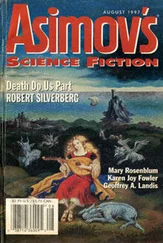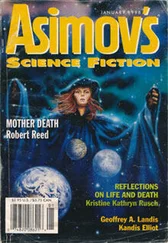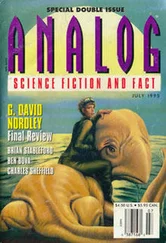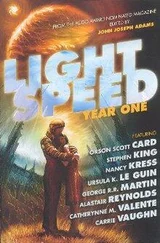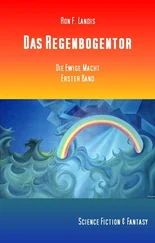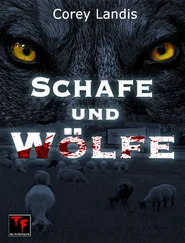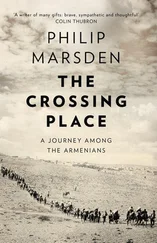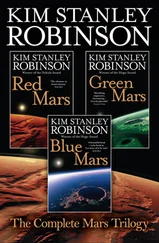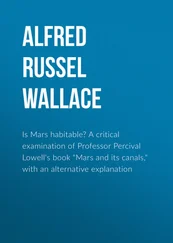The land below had been shaped and reshaped by enormous impact craters and by vast lava flows. As they continued northward, Ryan noticed odd craters with a peculiar, melted look, as if the impacting meteoroid had splashed into thick ice cream.
The first of the three liquid oxygen tanks was sputtering, nearly empty. Ryan opened the valve to start feeding from the second tank, and felt the engine surge with the increased fuel flow. He diverted boil-off gas through the first tank to blow the last of the oxygen out, and then, satisfied that it was completely dry, jettisoned it. Freed of the weight and drag of the extra tank, Butterfly jumped upward.
Two tanks left.
Farther north he started to see white, at first just a narrow rim of shiny frost on the north-facing side of the crater rings, and then more and more frost, patterns of white in spiderweb traceries across the hills, limning the slightest changes in topography.
He was approaching the polar circle.
Ryan looked up. Ahead of him, the sky had lost its pale ochre color. It was an ominous deep brick red, with knots and swirls of darker color. He cursed under his breath and checked the altimeter. Eleven hundred meters above ground level. He pulled back slightly, trading speed for rate of climb, but it looked like there was no way he could gain enough altitude to climb over the storm.
He could see something moving below. Snakes.
He looked again. Under him, ribbons of white slithered snakelike across the landscape. It was rivers of blowing snow, he realized, following the sinuous path of least resistance across the lowest passes between the hills. The wind velocity at the surface must be horrendous, he thought; it would take fifty meters per second, or even more, for air as thin as the Martian atmosphere to pick up and carry snow.
Spring was coming to the Martian pole. The winter snows, a mixture of carbon dioxide and water ice, were evaporating away with the return of the sun. The sheer mass of vaporizing atmosphere was blasting off the part of the snow that was made from water ice and blowing it south, creating little storms at the edge of the polar cap.
He wouldn’t be able to fight those storms, not directly, but they would be local, not global. He banked to the west, turning parallel to the looming banks of cloud, hoping to circle the storm, looking for a gap between the storm cells.
The land below was tundra now. He was at the arctic circle, and below the fluid rivers of airborne snow, the ground was patchy with ice. The ground was ridged in a network of enormous hexagons and triangles and squares all jumbled and fit together like a crazy jigsaw puzzle, the lunatic work of some mad geometer.
He checked the level of liquid oxygen in the fuel tanks. The second tank was almost dry. There was no reserve set aside for detours; if he didn’t head back north quickly, they would not have enough range to make the pole.
He switched the fuel feed to the third and final tank, purged out the last little bit of fluid from the second tank, and jettisoned it. At least the Butterfly would be more responsive.
There. A pale color of sky, a wide canyon of clear air between the polar storms.
“Hold on,” he said. “The ride is going to get humpy.” He banked to the right, following the edge of the storm north.
The polar cap revealed itself as a series of ice cliffs, each one rising above the last, the ice glistening blue. Fast the ice cliffs, the polar cap itself was smoking, the ice boiling away in the summer sun.
And then, suddenly, the ice below him dropped away. He was above an immense ice canyon. A hurricane wind drove down the canyon, a torrent of wind sweeping the airplane helplessly to the west. The wind from the entire evaporating polar cap was funneled into this channel, etching away the ice.
This was the immense Chasma Borealis. Over the eons, the swirling wind had carved away a kilometer’s thickness of ice, making a channel for the outflow of the evaporating atmosphere. The bottom of the chasm below him was jumble of dark rock, glacial moraine. He crabbed crosswind across the canyon, onward. To the left, an immense wall of blue ice rose a kilometer up from the jumbled rock of the base to the top.
He barely cleared the top, and abruptly it was calm.
At the top of the cliff was a rippled plain of snow-covered ice, stretching to the horizon. The pole, according to the inertial navigation system, was three hundred kilometers away.
It might have been a thousand.
Butterfly was out of fuel.
Ryan made another fifty kilometers before the rocket died completely. Engine out, in the thin atmosphere Butterfly could glide about as well as a brick. He stretched the glide as far as he could, eking out a few precious kilometers, and then flared it in to the lightest touchdown he could. It skidded across the snow like a sled, and Ryan struggled to hold the wings level as it fishtailed down the snow. It sledded, bumping against the irregular ice, and sledded—Ryan was beginning to wonder if it was ever going to stop. Until suddenly there was a boulder in the middle of the ice field.
There was no way to steer the aircraft. Ryan pulled back hard, but the airspeed was too low to hop the boulder. The rock ripped across the bottom of the fuselage. He did his best to keep the wings level, but the airplane slewed around and the right wing scraped on the ground. With a spray of snow, the wing buckled, and the ripped wing spar suddenly lost pressure. The wing bent back and tore off. The airplane rolled up, cartwheeled, and came apart.
Tana’s seat had come to rest upside down, completely detached from the fuselage, but remarkably intact otherwise. She unbuckled her harness and pushed the seat away. Debris from the airplane was scattered for a hundred meters down the ice. Estrela had been thrown clear and landed spreadeagled in a drift of snow a few feet away. Ryan, and the front half of the fuselage, protruded from a snowbank.
She could see Estrela moving, and then standing up. Her body was smoking. She brushed the smoke away, and with relief, Tana realized that it was just dry ice vaporizing away from the heat of her body.
In another moment, Ryan unfastened his harness and took a few steps onto the ice.
They were alive.
Ryan looked across at her. He seemed unhurt. The snow had apparently cushioned the landing.
She toggled her radio on to the common band. “Ryan, Estrela, are you okay? Any injuries to report?”
“Think I’m okay,” Ryan said. “Nothing broken, anyway.”
“ Foda-se! ” Estrela said. “Yes, I’m okay. I think.”
Tana wasn’t sure what she could have done if they had reported injuries anyway. The nearest emergency room was over a hundred million miles away. She looked across the ice. Liquid oxygen tanks, supplies, shards of aluminum-lithium alloy, the burned-out rocket engine, shreds of wing fabric; pieces of the Butterfly were spread on both sides of the skid mark the plane had made sliding along the snow. There was no way it was ever going to fly again. Jesus, that had been the most frightening moment of her life. She was amazed that Ryan had managed to hold it together for so long. “And what now?” she asked.
The question hung in the air for a moment, and then Ryan answered. “What choices do we have?”
A tremor shook the ice, and a moment later a sharp report. “What in the world—”
Tana pointed wordlessly.
A few hundred meters to the east, a geyser had sprung up from the snow, a brilliant white plume shooting a hundred meters into the air. Fragments of ice pattered down on the snow all around them. The ground below the geyser split open, and the glittering plume spread out, at first slowly, and then with increasing speed along the crack in both directions until it was a wall of glistening spray that raced toward the horizon in both directions.
Читать дальше
